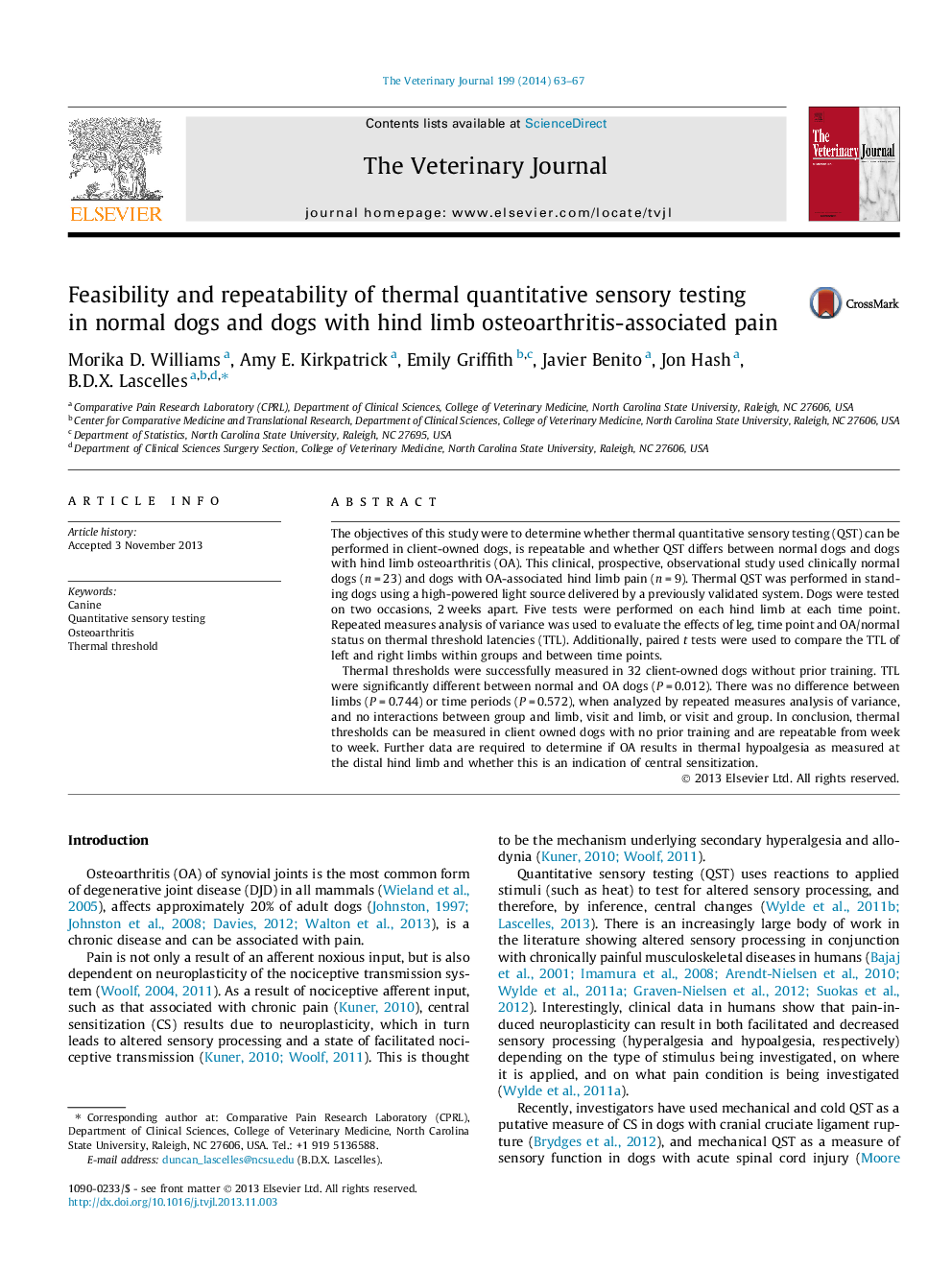| Article ID | Journal | Published Year | Pages | File Type |
|---|---|---|---|---|
| 5798596 | The Veterinary Journal | 2014 | 5 Pages |
The objectives of this study were to determine whether thermal quantitative sensory testing (QST) can be performed in client-owned dogs, is repeatable and whether QST differs between normal dogs and dogs with hind limb osteoarthritis (OA). This clinical, prospective, observational study used clinically normal dogs (n = 23) and dogs with OA-associated hind limb pain (n = 9). Thermal QST was performed in standing dogs using a high-powered light source delivered by a previously validated system. Dogs were tested on two occasions, 2 weeks apart. Five tests were performed on each hind limb at each time point. Repeated measures analysis of variance was used to evaluate the effects of leg, time point and OA/normal status on thermal threshold latencies (TTL). Additionally, paired t tests were used to compare the TTL of left and right limbs within groups and between time points.Thermal thresholds were successfully measured in 32 client-owned dogs without prior training. TTL were significantly different between normal and OA dogs (P = 0.012). There was no difference between limbs (P = 0.744) or time periods (P = 0.572), when analyzed by repeated measures analysis of variance, and no interactions between group and limb, visit and limb, or visit and group. In conclusion, thermal thresholds can be measured in client owned dogs with no prior training and are repeatable from week to week. Further data are required to determine if OA results in thermal hypoalgesia as measured at the distal hind limb and whether this is an indication of central sensitization.
